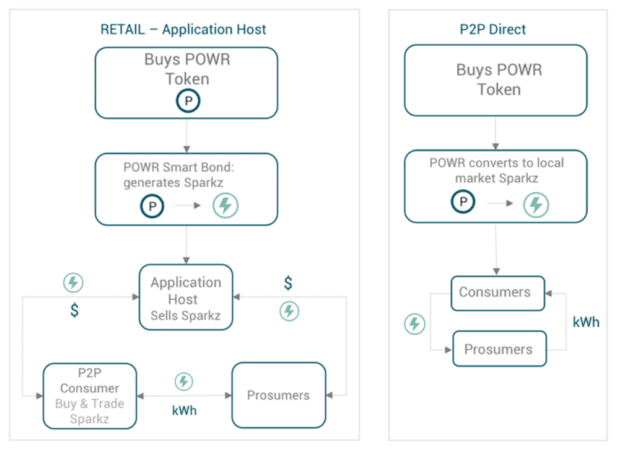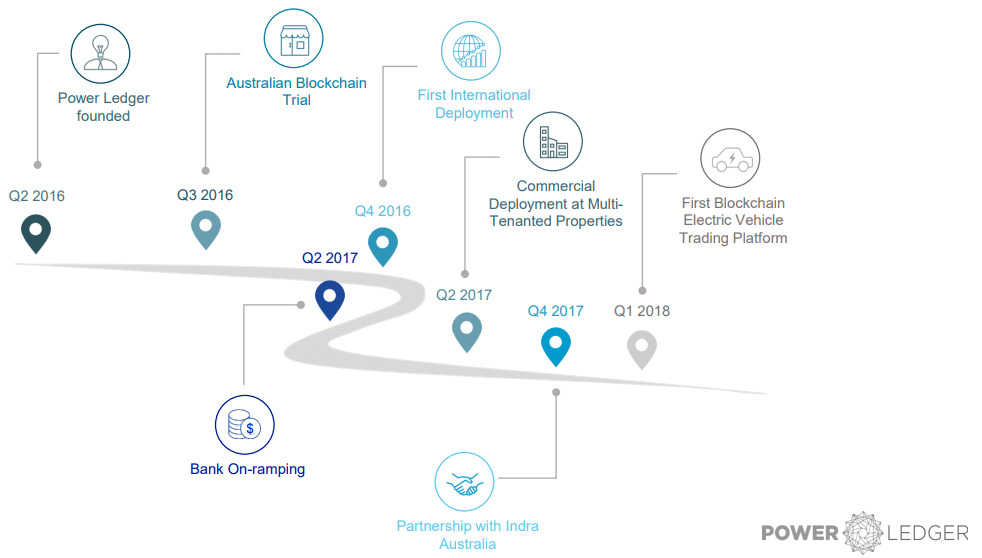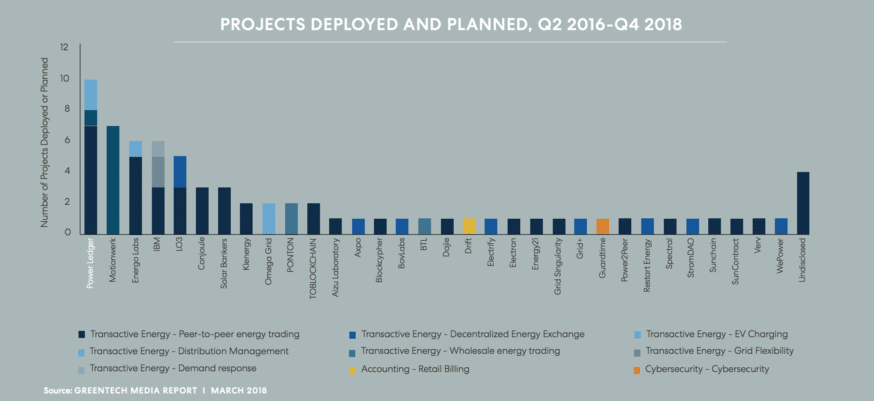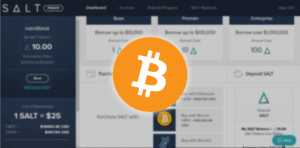What Is Power Ledger?
Power Ledger, a blockchain-based platform, plans to completely revolutionize the worldwide energy industry by enabling local areas to sell and distribute solar power to their neighbors without the need for a middleman. Imagine a world without reliance on big utility companies or foreign resources for all the energy needed to run your life. That world may become a reality in the near future in thanks to Power Ledger’s decentralized applications.
In a 2015 report, Deutsche Bank stated that at least thirty countries worldwide have already reached grid parity, the state where the price of solar-generated electricity was equal or less than the cost of local retail electricity. Combining innovations in both solar power and blockchain development, Power Ledger offers an unmatchable energy solution that is cleaner, cheaper, and more sustainable than traditional energy alternatives. In this article we will explore how Power Ledger plans to accomplish these goals and more, including:
- Power Ledger Overview
- How Does the Power Ledger Ecosystem Work?
- Power Ledger Token (POWR)
- Sparkz
- Platform Products
- The Power Ledger Team
- Company History and Accomplishments
- Achievement Timeline
- Future Projects and Roadmap
- Fundraising and Trading
- Where to Buy POWR Tokens
- Where to Store POWR Tokens
- Conclusion
- Additional Resources
Power Ledger Overview
The Power Ledger Platform forms peer-to-peer energy transactions by recording both the generation and consumption of all platform participants in real time. Energy generation and use are transacted at predetermined rates.
How Does the Power Ledger Ecosystem Work?
The Power Ledger Platform operates on two blockchain layers and uses two coins: The Power Ledger Token (POWR) and Sparkz. POWR and Sparkz are both used with the system and have different functions on both blockchains. The platform uses the public Ethereum blockchain as well as a private consortium blockchain, Ecochain.
Power Ledger Token (POWR)
Power Ledger Tokens allow application hosts and participants access to use the platform. If an application host does not have a sufficient number of POWR, it will not be able to access the platform. In the system, POWR is traded and put into escrow via an Ethereum Smart Bond exchange for Sparkz.
Once an application host has escrowed enough of its Power Ledger Tokens, it can no longer transact on the platform until it obtains a sufficient number of POWR to provide access. After an application host returns Sparkz to the platform, the Ethereum Smart Bond is unlocked. Then, previously escrowed POWR is returned to the application host.
The total amount of POWR equals 1,000,000,000. And, the currently available supply is just under 400,000.
Sparkz
You purchase and redeem Sparkz using fiat currencies within individual trading platforms that have closed-loop exchanges for energy and Sparkz. The application host uses Sparkz tokens to onboard its customers. Essentially, customers pay money for Sparkz, which they then trade for electricity.
The total amount of Sparkz is unfixed. Sparkz are generated as they are required, used, and then destroyed when redeemed. Sparkz’ price is tethered to a local government’s fiat currency and cost of power. For instance, in Australia one Sparkz would be equal to one Australian Dollar (AUD).
The price of Sparkz should remain quite stable as it’s pegged to a government-issued currency. There are different blockchains for each different local currency to allow multiple fiat currencies throughout the world to participate in the Power Ledger ecosystem at different prices.
Platform Products
Power Ledger boasts five products: xGrid, uGrid, Power Port, C6 and C6+, and Asset Germination, with one still in development, VPP2.0, an expansion of virtual power plants. These products provide different energy solutions, all on the blockchain. With xGrid, users can buy and sell energy on the existing electrical grid through peer-to-peer transactions. uGrid allows users to again buy and sell energy through peer-to-peer transactions but this time on an existing microgrid or embedded network, for example within an apartment building.
Power Port brings transparency to electric vehicle charging, allowing users to choose the source for the power that charges their car. C6 and C6+ use blockchain technology to track and validate carbon credits. Additionally, smart contracts facilitate the trading of carbon credits. Finally, Asset Germination provides a platform for the monetization of communities’ excess renewable energy.
The Power Ledger Team
Power Ledger’s team has immense expertise in both blockchain and electricity markets. Notable team members include Dr. Bill Tai and co-founder and chair, Dr. Jemma Green. Receiving his MBA from Harvard, Tai is a world-renowned venture capitalist. Tai’s experience is quite extensive. He is currently the chairman of Treasure Data as well as a board member of Bitfury and Voxer.
Tai has severed as a Board Director for seven publicly listed companies that have grown from startups that he funded. He’s also part of the World Economic Forum’s Technology Pioneer Committee and is an Adjunct Professor at Curtin University.
Green provides strategic external relations, risk management, and leadership development for Power Ledger. She has a finance career that spans over fifteen years highlighted with eleven years of investment banking experience. She also has her Ph.D. in Disruptive Innovation.
In addition to roles at Power Ledger, Green is also a research fellow at Curtin University Sustainability Policy Institute. Green’s doctoral research ties closely to Power Ledger’s goals to increase multi-unit development participation in the renewable energy economy.
Company History and Accomplishments
Power Ledger was created to address three major challenges that face the global energy system:
- Include individuals living in high-density housing in the distributed energy economy.
- Change electricity networks to make an incentive for the connection of decentralized energy resources (DERs).
- Mitigate the risk of connecting billions of dollars in network assets.
Achievement Timeline
Founded in May 2016, Power Ledger has accomplished some significant milestones in a short period. In August 2016, Power Ledger developed and trialed Australia’s first energy trading blockchain network. Shortly after, Power Ledger made its first international deployment by enabling its peer-to-peer blockchain-based energy trading platform across a distribution network in New Zealand.
In the 2nd quarter of 2017, Power Ledger developed and deployed a commercial energy management system that allowed the transparent distribution of locally generated renewable energy to tenants in multi-unit departments. Power Ledger has successfully incorporated pay for use solar-powered electric vehicle charging units into various Australian developments. Most recently, Power Ledger has created the first peer-to-peer energy trading trial in Bangkok, Thailand with energy developer BCPG.
Future Projects and Roadmap
Power Ledger has given a detailed list of goals for the next two years. They have already signed an agreement to bring its technology to Europe in 2019; the Liechtenstein Institute for Strategic Development will become the first European Application Host to use Power Ledger’s peer-to-peer energy trading platform in Europe.
Additionally, Power Ledger finished multiple agreements that will bring its platform to Asia in the next year as well. Indian based Mahindra has also closed a deal with Power Ledger to settle microgrid transactions.
Fundraising and Trading
Power Ledger’s POWR Presale sold out in just three days and raised over thirteen million dollars (AUD) in exchange for 190,000,000 tokens. After the presale, Power Ledger held an ICO to sell the remaining 160,000,000 POWR tokens allocated to Token Generation Event. After both rounds, funds raised totaled thirty-four million dollars (AUD).
The Australian Government also awarded Power Ledger a grant for 8 million dollars (AUD) to develop its technology and concept further. Australia has one of the highest costs of electricity in the world and thus has a large stake in the overall success of the company.
After its Token Generation Event, POWR began trading on exchanges November 1st, 2017 for 10 roughly cents. Since hitting exchanges, POWR had an impressive short-term bull run reaching an all-time high of $2.01 in the first week of January.
Since reaching its all-time high, the price of POWR fluctuated throughout the rest of early 2018, hitting a couple more peaks, $1.09 and $0.80, and some lows. Recently, POWR has been sitting around $0.15, a significant drop from it’s January high. POWR’s 2018 negative price movement has been highly correlated to Bitcoin’s massive downswing since the new year. If the launch of VPP2.0 is successful, it’s possible we could see an upswing in the value of POWR.
Where to Buy POWR Tokens
POWR is currently available at Upbit, Huobi, Binance, Digifinex, among others.
Where to Store POWR Tokens
As an ERC20 Token, you must store POWR tokens in a wallet with ERC20 support. One of the most popular Ethereum software wallets is MyEtherWallet.
Providing better security than software wallets, hardware wallets provide the safest method for prudent investors to store owned cryptocurrency. The most two popular hardware wallets are the Ledger Nano S and Trezor. Designed with ERC20 support, both the Ledger Nano S and Trezor can store POWR tokens.
[thrive_leads id=’5219′]
Competition
This organization is hardly the only blockchain platform tackling the world’s energy questions. From solar power to blockchain energy grids, many companies are creating peer-to-peer energy trading systems. One example, Electron, is a blockchain company based in the UK that aims to help transition the energy industry to a smart grid system and “[use] decentralized technology to advance the shared infrastructure of energy markets.”
Conclusion
Power Ledger provides a blockchain-based marketplace that can truly change the world. Taking power away from large energy companies, Power Ledger gives local communities the ability to sell their excess solar power to neighbors. Power Ledger has created an energy distribution and tracking platform that allows consumers to buy carbonless, sustainable energy at lower prices than what’s offered by traditional electric companies.
Power Ledger has plans to expand its operations to three continents worldwide and has amassed an army of powerful strategic partners to help achieve its goals. With the planned release of multiple applications for its platform in the immediate future, the project has positioned itself to disrupt multiple energy markets throughout the world creating a bright future for all participants involved in this green revolution.
Editor’s Note: This article was updated by Rachel Lantz on November 11, 2018, to reflect the recent changes of the project.
Additional Resources
Never Miss Another Opportunity! Get hand selected news & info from our Crypto Experts so you can make educated, informed decisions that directly affect your crypto profits. Subscribe to CoinCentral free newsletter now.















